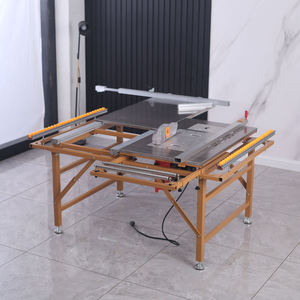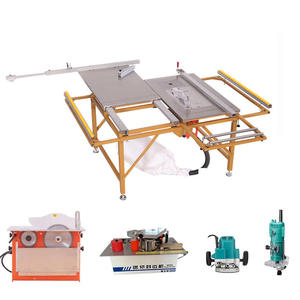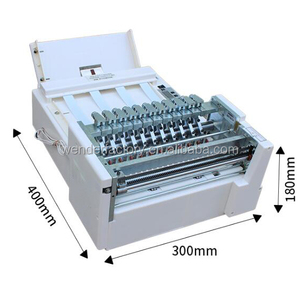
All categories
Featured selections
Trade Assurance
Buyer Central
Help Center
Get the app
Become a supplier

(1107 products available)


















































A worktop cutting machine ensures accurate and uniform cuts of diverse materials, such as wood, metal, plastic, and stone. The following are some common types of worktop cutting machines:
Laser cutting machines
Laser cutting machines use a laser beam for worktop cutting. They are commonly used for worktop cutting of metal, plastics, wood, and fabric. The machines feature a laser source, an optical system for beaming and directing the laser to the worktop, and a motion control system for controlling the movement of the worktop cutting piece.
Plasma cutting machines
Worktop cutting machines for plasma are composed of power sources, plasma torches, and automated torch control systems. The machines are used for worktop cutting thicker metals, such as stainless steel, aluminum, and carbon steel.
Waterjet cutting machines
Waterjet cutting machines use pressurized water or a mixture of water and abrasive for cutting the worktops. They feature a high-pressure pump, a cutting head with a nozzle, and a motion control system for directing the movement of the worktop piece. Waterjet cutting machines are suitable for cutting a great variety of materials, including metals, ceramics, glass, and stone.
Milling worktop cutting machines
The machines have a rotating cutter and a worktop support system. They are commonly used for the cutting or shaping of metal, wood, and plastic worktops. Milling worktop cutting machines allow for high-precision cuts and complex shapes.
Worktop cutting machines with a band saw
The worktop cutting machine types with a band saw feature a continuous saw blade and a band saw drive system. The machines are used for the accurate and smooth cutting of a great variety of worktops, including solid wood, composite, and plastic. The worktop cutting band saw machines are perfect for cutting intricate shapes and curves.
Automatic worktop cutting machines
These machines employ advanced technology such as CNC (computer numerical control) to ensure precision and automate the cutting process. An example of such a machine is a worktop cutting CNC router, which is commonly used for cutting and machining composite, wood, and acrylic worktops.
An industrial worktop cutting machine usually has a heavy-duty stainless steel frame to withstand constant workplace use. Machines' motor power varies but can be over 6.5 horsepower to cut through thick worktops with ease. Most have an emergency stop button for added safety, and worktop cutters have a fence and holds-down clamp or a guiding rail and a pusher system to make accurate cuts without moving the workpiece. Cutting depth varies but can be approximately 70 mm, making it suitable for cutting through thick worktops.
Maintaining an industrial cutting machine involves cleaning it after every use and ensuring all fasteners are securely in place. Cutting blades are usually removable and should be replaced when worn or damaged before they are removed to ensure user safety. Some worktop cutting machines have self-lubricating blades and don't require regular maintenance, but guiding rails and other parts that move should be lubricated from time to time to ensure smooth movement and operation, including locking mechanisms.
The worktop cutting machine is applicable in various industry sectors. Here are some cutting worktop machine usage scenarios.
Fabrication shops
Worktop cutting machines are mainly used in stone fabrication shops. In such shops, workers use the machines to cut different types of stone worktops, such as granite and quartz. As a result, they find it easy to create kitchen and bathroom countertops.
Renovation and remodeling projects
In renovation and remodeling projects, worktop cutting machines are used to customize existing worktops. They can also create new ones based on specific design requirements. Usually, the beauty and functionality of an entire room might be improved.
Joinery and carpentry businesses
Worktop cutting machines are used in joinery and carpentry businesses when working with wooden or laminate worktops. The cutting machines ensure precise cuts and consistent results when creating furniture pieces, including desks, tables, and cabinetry.
Production facilities
Any production facility that involves the use of worktops can greatly benefit from a worktop cutting machine. This includes facilities that work with materials like plywood, MDF, and acrylic. The machine helps when making work surfaces, assembly lines, and laboratory benches. Using the machine increases efficiency in the production line.
Architectural and interior design studios
Worktop cutting machines are used in architectural and interior design studios when creating prototypes and models of high-end fixtures and control surfaces. The precision and control of these machines assist designers in translating their ideas into tangible elements that enhance the overall aesthetics of a space.
Educational institutions
Some educational institutions have workshops that offer students hands-on training on different worktop cutting machines. The workshops provide the perfect opportunity for students to practice their worktop cutting skills. They gain experience and familiarity with different types of worktop cutting techniques and machines.
Requirements analysis
Before buying a worktop cutting machine, it is important that business buyers evaluate their specific requirements. The requirements to be considered include the types of worktops to be cut, the volume of cutting production, the available space, and the budget considerations. After an in-depth assessment, buyers can choose machines that fit their production needs and business models.
Quality assessment
It is important for business buyers to focus on the quality of the worktop cutting machine when purchasing. First, buyers can choose machines with good quality and high durability by researching brands and suppliers. Second, buyers can also refer to the user experience of others and choose machines with positive evaluations. In addition, buyers may consider the precision and stability of the machine. Choose a machine with high cutting precision and stable performance to ensure the quality of the finished product.
Function selection
Worktop cutting machines may have different functions depending on the model. When purchasing, buyers should consider the functions they need and choose a machine that meets their needs. For example, buyers may need to cut worktops of different materials, so they can choose machines with more cutting blades. In addition, buyers can also choose machines with additional functions, such as engraving or milling, according to their business needs to enhance the versatility of the machine.
Ease of use and maintenance
When purchasing worktop cutting machines, buyers should consider the ease of use and maintenance. First, buyers can choose machines with user-friendly interfaces and operating systems, making it easier for operators to master and use them. Second, buyers can choose machines that require less maintenance and are more convenient to maintain and repair. In addition, buyers can also understand the technical support and after-sales service provided by suppliers to ensure timely support and service when encountering problems.
Q1: Can a worktop cutting machine cut materials other than laminate?
A1: Yes, depending on the type and model of the machine, it can cut various materials, including wood, MDF, chipboard, solid surface, and granite.
Q2: Is it difficult to operate a worktop cutting machine?
A2: Most worktop cutting machines are designed to be user-friendly and can be operated with basic training. However, reading the manual and receiving training before use is essential.
Q3: Can a worktop cutting machine make cuts other than straight ones?
A3: Yes, advanced machines can make various cuts, including straight, curved, and bevel cuts. However, the capacity to make non-straight cuts depends on the machine's model and specifications.
Q4: Does a worktop cutting machine provide a cleaner finish compared to manual methods?
A4: Yes, worktop cutting machines offer greater precision and result in cleaner, smoother edges than manual cutting methods.